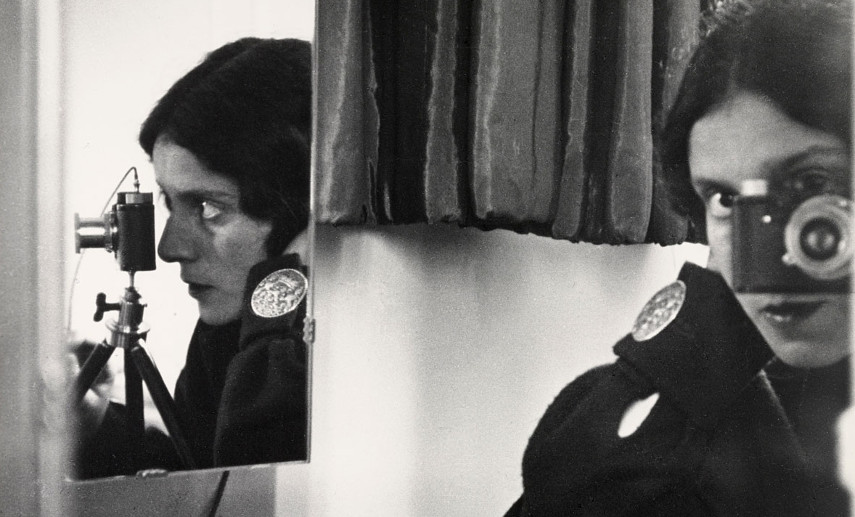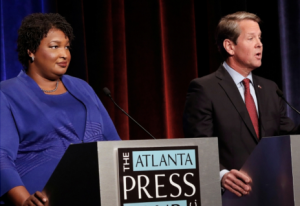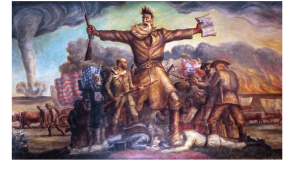At the onset of World War I, few keen-eyed political spectators were surprised or concerned for war. The tensions between European powers had been building for quite some time. Very few, however, thought that the war would be such a bloody and atrocious war. By the end of the global affair, Europe was in ruins, particularly the Germans, who suffered the consequences of massive reparations and massive inflation.1 Disillusionment among the common people was high even by the middle of the war, and women were making a stand for voting rights while they united with pacifists against the war.2 Hannah Hoch was one woman who expressed her desire for equality, and she did so by radical expression through art. The aftermath of World War I was especially a time when art was more than a reflection of societal changes; art served as a plea for change, as a tool for political expression, and as a critique of society and culture. The rapid explosion of political art at the dawn of the twentieth century was felt across the western hemisphere through the works of Diego Rivera and Frida Kahlo, through Pablo Picasso and Wassily Kandinsky, and for a short period of time, through the Dada Movement.
The Dada Movement was a trend in art, literature, and music beginning shortly before the end of World War I. While Dada had no official set of principals by which it operated, the main characteristic of Dada was revolt against the Bourgeois, against tradition, against restrictive government, and against the commonly accepted restrictions of what was or was not art. Dada often encouraged and espoused left-wing ideology, particularly communism and anarchism. The movement came to fruition in Zurich, Switzerland at the Cabaret Voltaire. Hugo Ball, the founder of Cabaret Voltaire, named it after the French philosopher Voltaire who praised rational and scientific thought and condemned irrational superstition. The salon quickly emerged as an epicenter for artists in exile; the emergence of a movement opposed to the bourgeoisie, the status-quo, and what might be called today “The Man,” “big brother,” or “the system,” flowed naturally from a confluence of radical thinkers at the Cabaret Voltaire.3 This movement, though not completely united, emerged as a trend in Berlin around 1916 during the war, particularly out of the leadership of the young woman Hannah Hoch and her lover Raoul Hausmann. Hausmann introduced Hoch to avant-garde art and to the Dada movement in Zurich shortly after her return to Berlin in 1916. Hoch had been serving as a member of the Red Cross throughout 1914, taking a short break from her time at university, which had begun in 1912. Hoch and Hausmann became consumed by the Dada movement, innovating and perfecting a new artistic medium of their own, the photo-montage. Hausmann also created Dada poetry, which, according to the National Gallery of Art, was supposed to offer, “both a metaphor for the destruction caused by war and a commentary on the deceitfulness of language.”4 Here is a video recording of his poem, Fmsbw.
https://www.youtube.com/watch?v=y5vxwhibzfw
Although it may not seem significant by today’s standards, the photo-montage broke the boundaries of classical art. Rather than paint on canvas, Hoch and Hausmann manipulated pieces of photographs to create a new piece of art. Although Hausmann and Hoch were romantic partners and associates in art, Hoch stood out on her own.5 In 1919, one of Hoch’s most famous works was published. It was called “Cut With a Kitchen Knife: Dada Through the Last Weimar Beer-Belly Cultural Epoch of Germany,” and it was featured in 1919 in the First Berlin Dada Exhibition. Viewed closely, a feminist agenda is clear in the photo-montage. At the bottom right corner of the artwork, Hoch placed a cutout of her face in place of her signature; immediately to the right of that cutout is a map of Europe highlighting all of the nation-states that acknowledged women’s voting rights at that time. But Hoch’s artwork addressed more than feminism. The same painting depicts a sort of spectrum of political ideology, with followers of the Dada Movement on the bottom, communist theorists and social scientists in the middle, and German political authorities like Kaiser Wilhelm II at the top right. Near the head of Wilhelm is a script that reads “die anti dada istiche,” or the “the one who is anti-Dada.” Hoch’s work was also promoting the Dadaist movement as a political movement, as an anarchist movement still farther left than communism, and as opposed to the machinery of the German regime. Hoch’s art was displayed again in 1920 at the First International Dada-Fair.

Two years later, Hoch and Hausmann parted ways and Hoch became romantically involved with Dutch writer, Til Burgman, after meeting her on a trip in Italy. Hoch never publicized her lesbian affair. The couple lived at The Hague for three years, and for another six in Berlin until their split in 1938. Although Hoch was called a “cultural Bolshevik” by a Nazi commentator in 1937, and her art was declared “degenerate art” by the Nazi party, Hoch lived and worked in Berlin throughout World War II, and until her death in 1978. Hoch’s work received little historical attention for some time due to her refusal to allow researchers to view her papers during her lifetime. However, upon the sale of her estate after her death, historians have begun to illuminate the story of this fascinating woman.6
- Salem Press Encyclopedia, 2017, s.v. “World War I,” by Robert F. Gorman. ↵
- Helen McCarthy, “Pacifism and Feminism in the Great War,” History Today 65, no. 4 (April 2015): 4–5. ↵
- Carmen Stonge, “Dada Movement Emerges at the Cabaret Voltaire,” Great Events from History: The Twentieth Century (Online Edition) (Salem Press, 2013). ↵
- “DADA – Techniques – Sound,” https://www.nga.gov/exhibitions/2006/dada/techniques/sound.shtm. ↵
- “Höch, Hannah (1889 – 1978),” in Who’s Who in Gay and Lesbian History, edited by Robert Aldrich, and Garry Wotherspoon (New York: Routledge, 2002). ↵
- “Höch, Hannah (1889 – 1978),” in Who’s Who in Gay and Lesbian History, edited by Robert Aldrich, and Garry Wotherspoon (New York: Routledge, 2002); C. Townsend, “Exhibitions: Hannah Hoch,” Art Monthly no. 374 (2014): 20. ↵



41 comments
Gabriela Serrato
I enjoyed this article very much because I love learning about artists and their stories. I was never aware of Hannah Hoch, so thank you so much for enlightening me and introducing me to her art. I am in admiration of her work now and especially because she used it as a way to speak out about her beliefs. Art is a great outlet of personal expression, and I love that she used it to spread a message and begin new art forms that I still see present today. Fabulous article.
Sebastian Castro Ramos
On high school I learned about the DADA movement, but not quite as it is described in this article. The definition of DADA I was taught is that DADA did opposed and criticized the current government, political views, tradition and expectations for art, but it did not promote any other ideology like communism or anarchism. The purpose of DADA was to show that the world was a mess and that nothing made sense because during the great war millions of people died. They tried to show this by making pieces of art that showed chaos and had no understandable meaning. This is also implied on the DADA Manifesto by Tristan Tzara when he defines DADA: DADA DOES NOT MEAN ANYTHING.
Erin Vento
Before this article, I had never heard of the Dada Movement or Hannah Hoch. This article was particularly enlightening firstly because you hardly get taught about artistic movements in school and secondly because the only female artist, activist, politician you are taught about is Frida Kahlo. Its nice to hear about other strong-willed women making themselves heard by creating things that are beautiful to look at and make you think. This really is a topic people should hear more about.
Evelin Joseph
Before reading this article, I had never before heard of such a movement. It is astounding to learn that the people involved in the Dada Movement, like Hannah Hoch, used their artistic abilities to revolt against what they believed was wrong. Hannah Hoch especially influenced me as she fought for women’s rights as well as against political injustices. It is unfortunate that her work did not receive more attention at the time, but is comforting to know that her stories have come to light now.
Mark Martinez
A well put together article that really got to the topic of the arts. Art has always been a used to express political views as well as the artistic passion. Even through both World War One and Two Hannah Hoch did what she loved despite everything that happened around her. You can see how this was her passion by the way she denied historians to document her work while she was alive. Hannah Hoch was not an attention seeker or purposely trying to go down in history, just a strong woman with a passion.
Mariah Cavanaugh
I thoroughly enjoyed your article. I love art being used as activism, whether it is in music, paintings, photographs or theatre. I really like the way you kept the focus of the article on Hannah Hoch while interweaving in other artists such as Hausmann. It seems as though Hannah was an extremely private person yet felt so angered by her lack of rights that she put her art out to the public as a way of standing up for herself and others. I admire her for using her talents to stand up against an oppressive regime.
Mario Sosa
When I first glanced at Dada art, it seemed nothing more than a bunch of random collage of newspaper cutouts. This article showed me that Dada was much more sophisticated than it may have seen at first glance. Interesting how Hoch started a political movement on Dada that revolved around the idea of anarchism. It is rather unfortunate that this art style was highly underappreciated for so long. I found this to be a very informative article with a great introduction; nice job.
Samuel Stallcup
Interesting article. I had no idea Cabaret Voltaire was actually historically significant, I figured it was just the name of the band. I feel the poem by Raoul Hausmann seemed like the most significant part of this sudden popularity in “avant-garde” art during this Dada movement. Like you said, it can be perceived as a comment on the way the world was back then: war was rampant and people felt lost in their lives because they were not sure when this madness would end. I feel this sort of art is going to rise again giving our current political climate.
Valeria Hernandez
The article’s first sentences offer background information on the consequences of World war I giving readers insight into the lifestyle after the fact, giving the writer the opportunity to establish her thesis. The author highlights women’s efforts during that period, emphasizing Hannah Hoch efforts with the use of art. I really enjoyed Repka’s incorporation of the definitions of the movement as well as the names of the painters who participated in the artistic explosion. I appreciate Repka’s article because he builds up to the efforts of Hannah Hoch with the Dada movement and Raoul Hausmann. The author explains how Hoch and Hausmann revolutionized the art industry.
Alexis Renteria
Never before had I heard of this movement but this article does a well job of explaining the movements purpose of arguing against a capitalist society and addressing feminism. I’m amazed at the fact that these subjects could be represented through mere photographs on a collage and how much of a role the Dada movement played in women rights. Overall this was a great article explaining what the Dada Movement was and how it addressed certain issues shortly after the end of World War 1.